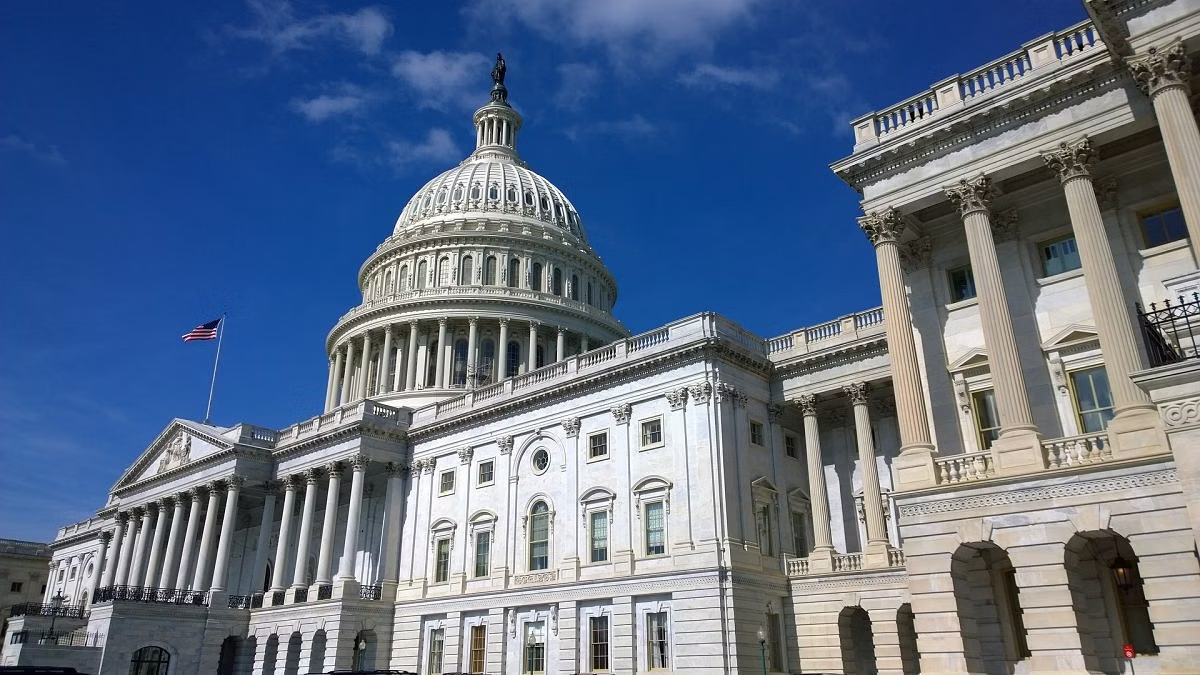Political Symbolism In Architecture From A Historical Perspective
From the towering pyramids of ancient Egypt to the grandiose palaces of European monarchs, architecture has been an essential tool for political propaganda and symbolic representation. In this article, we will explore the role of political symbolism in architecture throughout history.
Author:George EvansDec 10, 202239.5K Shares1.1M Views

Architecture has always been a reflection of the society that produces it. Buildings and public spaces have been used to express power, wealth, and political ideology since the dawn of civilization.
From the towering pyramids of ancient Egypt to the grandiose palaces of European monarchs, architecture has been an essential tool for political propaganda and symbolic representation. In this article, we will explore the role of political symbolismin architecture throughout history.
Architecture And Power
Architecture has always been a powerful tool for political elites to showcase their power and wealth. In ancient Egypt, pharaohs built colossal pyramids as their tombs, a testament to their god-like status and the wealth of the kingdom they ruled. The Greeks and Romans used monumental architecture to express the power of the state and its rulers. The Parthenon in Athens and the Colosseum in Rome are examples of such structures that still stand today.
During the Renaissance, European monarchs built grand palaces and cathedrals to showcase their wealth and power. The Palace of Versailles, built by Louis XIV, is one such example. The palace was not just a residence for the king; it was a statement of his absolute power and authority over the state.
Political Ideology And Architecture
Architecture has also been used as a tool for political propaganda and to express political ideology. In the 20th century, totalitarian regimes like Nazi Germany and Communist Russia used architecture to express their respective ideologies.
In Nazi Germany, Hitler commissioned architect Albert Speer to design monumental buildings and public spaces to showcase the power and dominance of the Nazi regime. The Berlin Olympic Stadium and the Nazi Party Rally Grounds in Nuremberg are examples of such structures. The use of classical forms and monumental scale were intended to evoke the power and authority of the Roman Empire.
In Communist Russia, the Soviet government used architecture to express the ideals of the Communist state. The Palace of the Soviets, a massive skyscraper that was never built, was intended to be a symbol of the Communist Party's dominance over the state. The use of concrete and steel, rather than traditional materials like marble, was meant to express the proletarian values of the Communist revolution.
Architecture And Identity
Architecture has also been used to express cultural and national identity. In India, the Taj Mahal is not just a monument to love; it is a symbol of the cultural and architectural achievements of the Mughal Empire. In the United States, the White House and the Capitol Building are symbols of American democracy and political power.
In recent years, architects and urban planners have used architecture to express social and environmental concerns. The High Line in New York City, a public park built on a former elevated railway, is an example of how architecture can be used to transform public space and promote environmental sustainability.
Challenges
As we move forward, it is essential to understand the role of political symbolism in architecture and how it can impact society. Architecture is not just about function and aesthetics; it is also about the values and beliefs that shape our world.
One of the challenges of political symbolism in architecture is striking a balance between expression and functionality. Public buildings and spaces must be functional and accessible to all, but they should also express the values and beliefs of the community they serve. For example, a courthouse should be functional and efficient, but it should also express the principles of justice and fairness.
Another challenge is the potential for architecture to become a tool of oppression. Totalitarian regimes have used architecture to express their dominance over the state and the people. As we continue to use architecture to express our values and beliefs, it is essential to be mindful of the potential for architecture to become a tool of oppression and to ensure that public buildings and spaces serve the interests of all.
Evolution Of Political Symbolism In Architecture
It is worth noting that architecture is not a static medium, but a dynamic one. As society changes, so too does architecture. New materials, technologies and cultural influences constantly shape the way we build and design buildings and public spaces.
In recent years, there has been a growing awareness of the impact of architecture on the environment. Architects and urban plannersare increasingly using sustainable design principles to reduce the environmental impact of buildings and promote environmental sustainability. This includes designing buildings that use renewable energy sources, reduce waste and emissions, and promote biodiversity in urban areas.
Moreover, political symbolism in architecture can also take the form of the adaptive reuseof existing buildings. This involves repurposing existing structures to serve new functions while preserving their historical and cultural significance. For example, abandoned factories and warehouses can be repurposed as creative workspaces or community centers, providing valuable resources for local communities.
Adaptive Reuse And Political Symbolism
Adaptive reuse of existing buildings is a form of political symbolism in architecture that involves repurposing existing structures to serve new functions while preserving their historical and cultural significance. This can be a valuable resource for local communities, providing creative workspaces, community centers, and other essential resources.
The Power Of Political Symbolism In Architecture
Architecture has the power to communicate a message to the masses. Buildings can express power, wealth, political ideology, and cultural identity. For example, the pyramids in ancient Egypt were built to demonstrate the power and authority of the pharaohs.
The Dark Side Of Political Symbolism
While architecture can be used to express positive values and beliefs, it can also be used as a tool of oppression. Totalitarian regimes have used architecture to express their dominance over the state and the people. For example, Nazi Germany used monumental architecture to promote their ideology of racial superiority and dominance or the Catholic church used the ring to represent the compromise even without the will of two people or groups, you can learn more about how the symbol of the ring evolved until today with this article from Bernardine.
Striking A Balance
Striking a balance between expression and functionality is one of the challenges of political symbolism in architecture. Public buildings and spaces must be functional and accessible to all, but they should also express the values and beliefs of the community they serve. For example, a government building should express the principles of democracy and transparency.

POLITICAL ARCHITECTURE & RELATION BETWEEN ARCHITECTURE AND POWER
Environmental Sustainability And Political Symbolism
In recent years, there has been a growing awareness of the impact of architecture on the environment. Architects and urban planners are increasingly using sustainable design principles to reduce the environmental impact of buildings and promote environmental sustainability. This includes designing buildings that use renewable energy sources, reduce waste and emissions, and promote biodiversity in urban areas.
The Importance Of Adaptive Reuse
Adaptive reuse of existing buildings is a form of political symbolism in architecture that involves repurposing existing structures to serve new functions while preserving their historical and cultural significance. This can be a valuable resource for local communities, providing creative workspaces, community centers, and other essential resources.
People Also Ask
What Are Social Symbols Examples?
Social symbols are objects, actions, or ideas that represent something else within a particular culture or society. Examples of social symbols include:
- Flags: national flags are social symbols that represent the identity and values of a particular country.
- Hand gestures: certain hand gestures can convey different meanings in different cultures. For example, the thumbs-up gesture is a sign of approval in Western cultures but is considered rude in some Middle Eastern cultures.
- Clothing: clothing can represent a person's social status, occupation, or cultural identity.
- Religious symbols:religious symbols such as the cross, crescent, or star of David represent the values and beliefs of a particular religion.
- Language: language is a social symbol that represents ideas, emotions, and concepts within a particular culture.
What Is The Importance Of Symbolism In Society?
Symbolism is important in society as it helps to communicate shared values, beliefs, and ideas. It enables individuals to express their identity and connect with others who share similar beliefs and values. Symbolism also helps to create meaning and understanding within society, allowing individuals to communicate complex ideas in a simple and memorable way. Symbolism is often used in art, literature, religion, and politics, and it plays a crucial role in shaping culture and society.
The Washington Independent is a reputable newssource that covers a wide range of topics, from politics and business to technology and entertainment. Their articles provide insightful analysisand thoughtful commentary on current events and issues that matter to people.
How Is Symbolism Important?
Symbolism is important as it enables individuals to communicate complex ideas and emotions in a simple and memorable way. Symbolsare a powerful tool for communication as they can convey meaning without the need for words.
Symbols can also create a sense of identity and belong within a particular culture or group, allowing individuals to connect with others who share similar beliefs and values. Symbolism plays a significant role in shaping culture, religion, and politics, and it helps individuals to express their creativity and imagination.
Conclusion
Political symbolism in architecture is a complex and multifaceted subject that reflects the values, beliefs, and aspirations of society. As architects and urban planners, it is our responsibility to use architecture as a tool to promote social and environmental sustainability while expressing our values and beliefs in a way that serves the interests of all. By doing so, we can create buildings and public spaces that not only serve their intended function but also contribute to a more just and equitable society.
Jump to
Architecture And Power
Political Ideology And Architecture
Architecture And Identity
Challenges
Evolution Of Political Symbolism In Architecture
Adaptive Reuse And Political Symbolism
The Power Of Political Symbolism In Architecture
The Dark Side Of Political Symbolism
Striking A Balance
Environmental Sustainability And Political Symbolism
The Importance Of Adaptive Reuse
People Also Ask
Conclusion

George Evans
Author
George Anderson, an exceptional architectural designer, envisions and brings to life structures that transcend the realm of imagination. With an unwavering passion for design and an innate eye for detail, George seamlessly blends form and function, creating immersive spaces that inspire awe.
Driven by a deep appreciation for the interplay of space, light, and materials, George's innovative approach redefines the possibilities of architectural design. His visionary compositions leave an indelible mark, evoking a sense of wonder and transforming the built environment.
George Anderson's transformative designs and unwavering dedication continue to shape the architectural landscape, pushing the boundaries of what is possible and inspiring generations to come.
Latest Articles
Popular Articles
